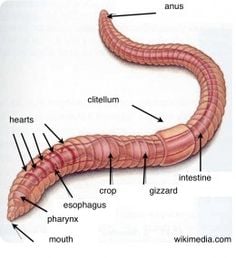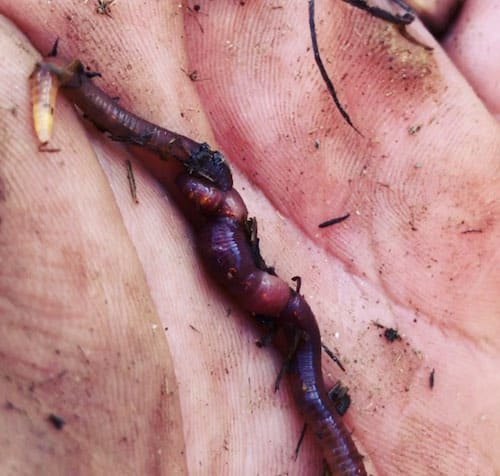Red Wiggler Worms - Natural Service for Environmentally Friendly Composting
Red Wiggler Worms - Natural Service for Environmentally Friendly Composting
Blog Article
Making The Most Of the Benefits of Red Wiggler Worms: A Comprehensive Guidebook for Home Gardeners and Urban Farmers
In the realm of sustainable horticulture methods, red wiggler worms stand as unrecognized heroes, silently changing organic waste into nutrient-rich castings that can function wonders for soil health. By checking out the complexities of just how to efficiently care for and take full advantage of the benefits of red wiggler worms, individuals can open a wide range of possibilities for improving the sustainability and productivity of their gardening ventures.
Comprehending Red Wiggler Worms
Red Wiggler worms, renowned for their efficient composting capabilities, are a varieties of earthworms widely utilized in vermiculture techniques. These worms, scientifically called Eisenia fetida, grow in decaying organic product, making them ideal candidates for composting (Red Wiggler Worms). Red Wigglers are starved eaters, with the ability of consuming their own weight in natural waste daily. Their digestive procedure breaks down raw material into nutrient-rich castings, which are a beneficial resource for enriching soil and promoting plant development.
One secret characteristic of Red Wiggler worms is their reproductive price. These hermaphroditic creatures have both male and female reproductive body organs, permitting them to recreate quickly under desirable problems. A mature Red Wiggler can create numerous offspring in a brief duration, guaranteeing a consistent populace within a composting system.

Setting Up a Worm Container
When developing a worm bin for vermiculture purposes, correct prep work and interest to information are essential for developing a favorable environment for Red Wiggler worms. Begin by picking an ideal container for your worm bin.

Place the worm container in a cool, dark area away from straight sunshine and severe temperature levels. Routinely keep track of the wetness levels, including water if the bed linen feels flaky or dry. Feed the worms a balanced diet plan of vegetables and fruit scraps, staying clear of citrus fruits, onions, and spicy foods. By adhering to these actions, you can establish up a growing worm container that will successfully refine organic waste into nutrient-rich vermicompost for your garden.
Feeding and Preserving Worms
Ensuring a well balanced and nourishing diet regimen is critical for the health and productivity of Red Wiggler worms in a vermiculture system. Red Wigglers are voracious eaters, qualified of eating their very own body weight in natural issue daily. To keep a thriving worm populace, it is crucial to provide them with a range of food scraps such as vegetables and fruit peels, coffee grounds, tea bags, and crushed eggshells. It is important to prevent feeding them citrus fruits, onions, garlic, dairy products, meat, and oily foods as these can be harmful to the worms or create undesirable odors in the bin.
Appropriate dampness levels are likewise critical for the wellness of Red Wiggler worms. The bed linens should feel like a wet sponge, providing sufficient dampness for the worms to breathe with their skin. Frequently check the wetness levels and readjust by adding water or completely dry bedding material as required. In addition, preserving correct temperature level conditions in between 55-77 ° F(13-25 ° C )will click this ensure optimal worm activity and reproduction. By carefully monitoring their diet regimen, moisture, and ecological conditions, home garden enthusiasts and metropolitan farmers can sustain a healthy and balanced you could try these out and effective Red Wiggler worm population for composting purposes.
Harvesting Worm Castings
To effectively remove nutrient-rich worm spreadings from the vermicompost, an organized harvesting process is vital for maximizing the composting advantages. The first action in harvesting worm spreadings is to encourage the worms to move to one side of the bin.
After the spreadings have been harvested, it is very important to divide any continuing to be worms from the spreadings to avoid hurting them throughout storage or application. One effective technique is to develop cone-shaped stacks of castings under bright light. Worms will instinctively relocate away from the light, enabling very easy splitting up and elimination.
Finally, the collected worm castings ought to be saved in an amazing, dark, and completely dry place to preserve their top quality and effectiveness as a nutrient-rich soil change. By adhering to these steps, home gardeners and metropolitan farmers can take full advantage of the advantages of red wiggler worms in their vermicomposting systems.
Utilizing Worm Castings in Gardening
The unification of nutrient-rich worm spreadings right into garden soil can dramatically improve plant development and overall soil wellness. Worm spreadings, also recognized as vermicast, are a natural plant food created by red wiggler worms as they break down raw material. These spreadings are rich in crucial nutrients like nitrogen, phosphorus, potassium, and helpful microbes that promote plant growth and enhance soil framework.
When using worm spreadings in gardening, it is vital to mix them thoroughly into the soil or use them as a top clothing around plants. The slow-release nature of worm spreadings guarantees a constant supply of nutrients to plants with time, reducing the risk of nutrient leaching and promoting long-lasting dirt fertility. In addition, worm castings assist boost soil aeration, water retention, and microbial activity, producing a healthy and balanced environment for plant roots to prosper.

Verdict
To conclude, the utilization of red wiggler worms in home horticulture and metropolitan farming can significantly benefit dirt health and wellness and plant development. By understanding how to establish up and keep a worm bin, feed the worms appropriately, go to this web-site and harvest their nutrient-rich castings, garden enthusiasts can make the most of the advantages of these earthworms. Incorporating worm spreadings into gardening practices can boost soil fertility and total plant efficiency. On the whole, red wiggler worms offer a efficient and lasting option for boosting garden and ranch returns.
In the world of lasting gardening methods, red wiggler worms stand as unrecognized heroes, quietly transforming natural waste right into nutrient-rich spreadings that can function wonders for soil health and wellness.When developing a worm container for vermiculture objectives, correct prep work and interest to information are crucial for developing a helpful atmosphere for Red Wiggler worms. The very first step in harvesting worm spreadings is to motivate the worms to migrate to one side of the bin. Worm castings, likewise understood as vermicast, are a natural fertilizer created by red wiggler worms as they break down organic matter. By comprehending exactly how to set up and maintain a worm container, feed the worms appropriately, and collect their nutrient-rich spreadings, gardeners can make best use of the advantages of these earthworms.
Report this page